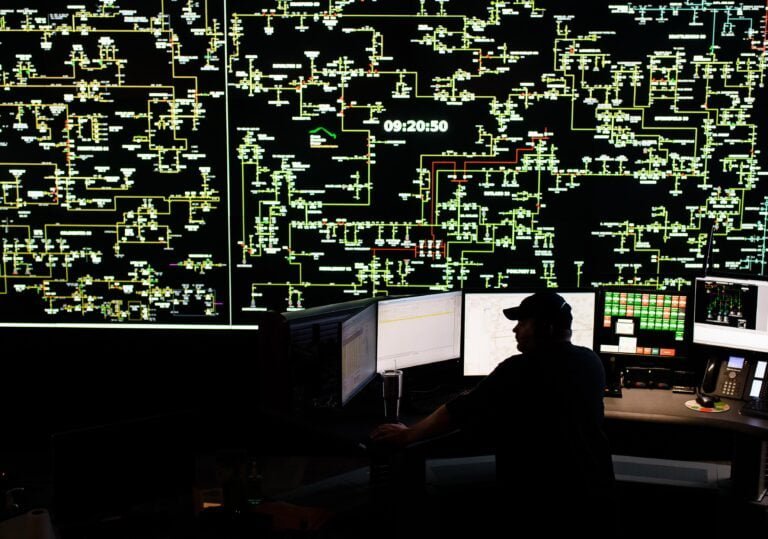Restoring power quickly after a major blackout can mean the difference between life and death, but cold starting an entire electrical grid is a complex and dangerous process. A hybrid computer model from Sandia National Laboratories that combines optimization, physical simulations and mental models of grid operators promises to create a fast and reliable plan to restore the lights.
While power outages are always disruptive, they usually only affect small parts of the overall grid. The complete loss of power in the entire network is more serious, and requires operators to effectively jump start the grid with the so-called “black start” generators. It involves a complex balancing act to avoid mismatches between energy production and consumption, as different sections of the grid are gradually brought back online. Get it wrong and the grid can collapse again.
“You stop having to feel around in the dark to make sure, ‘Is reality consistent with what all my data is telling me?'”
—Kevin Stamber, Sandia National Laboratories
Such events are rare, said Kevin Stamber, who leads the Sandia project, but there have been some close calls in recent years. When the Texas power system experienced major disruptions during February’s winter storms, operators were minutes away from a complete grid failure that could have cost month to resolve, he said. With climate change increasing the frequency of extreme weather events, and the growing threat of cyber attacks on critical power infrastructure, the risk is likely to increase.
That prompted Stamber’s team to develop a new method for making black start-up plans better able to cope with the often unpredictable behavior of real-world power systems. world. That’s no easy feat though, he said. “It’s a very, very delicate process in a very large system,” he said. “They are [black starts] is complex, challenging, difficult to solve and requires a significant computational commitment to obtain a solution. “
The gold standard method treats black start as an optimization problem, aimed at working in the best order to restore different grid components, such as generators, substations and power lines. . Current techniques tend to assume that the operator has full visibility and control of the grid however, which is often not the case.
What happens when the power grid fails?
In a blackout, critical components can be damaged, Stamber said, and operators may not have a full picture of what they have. And while utilities probably have a rough idea of what the load will be on different parts of the grid, there are no guarantees. “You finally have to basically feel around in the dark to make sure, ‘The truth matches what all my data is telling me?'” said Stamber.
That prompted the team to pair a cutting-edge optimization approach developed by researchers at the Lawrence Livermore National Laboratory and the University of California, Berkeley with additional modules designed to simulate how the reaction of grid of the restoration plan, and what the operators who implement it will do. behavior
The researchers envisioned something along the lines of a Choose Your Own Adventure book, but for grid operators.
The goal of the optimization model is to restore power as quickly as possible, while ensuring that the load on the grid is stable and does not cause another failure. It creates a recovery schedule that outlines the order in which the different generators are to be operated and when to connect the different parts of the grid. It is also checked against a physical power flow model to ensure that each step is feasible.
This restoration plan is then fed into a mental model of a grid operator built using the ACT-R framework, which makes it possible to simulate human decision-making. The model is built by encoding expert knowledge about how to perform the key steps involved in restoring the grid, and can read the restoration plan and use a simulated console to execute it.
However, the console is also tied to a dynamic simulation based on grid physics, designed to simulate how the network responds to operator actions, sometimes in unpredictable or challenging ways. The cognitive model is presented with information on the response of the grid through the simulated console, and, if the steps from the restoration plan cause any stability issues, it can take corrective action to not yet moving to the next step.
By simulating how an operator might deploy a restoration plan and react to grid behavior, Stamber hopes to create plans that are more tolerant of unexpected behavior. He thought of something along the lines of a Choose Your Own Adventure book, but for grid operators. “There are certain points along the way where things don’t go the way you expect, and you’re in a different part of the book,” he said.
The idea of involving the cognitive behavior of the operator is an interesting one, said Saifur Rahman, a professor of electrical engineering at Virginia Tech and 2023 IEEE President and CEO. But he points out that in a real-world system control center there are many operators with different perspectives interacting with each other. Also, so far, the team has only tested the IEEE Reliability Test System (RTS-96) method, which is small compared to a real-life power system, Rahman said. “To be plausible in a real situation I would like to see it tested on a 20,000 or 30,000 node system,” he said.
Part of the reason the team didn’t exist, Stamber said, was that they ran out of time and budget for the project. But he also thinks their method needs some work to make it easier on larger systems, perhaps by breaking the optimization problem into smaller sub-problems that are less computationally intensive. Either way, the team is now looking for potential utility partners to work with them to apply their techniques to more realistic problems.
From Your Site Articles
Related Articles Across the Web
